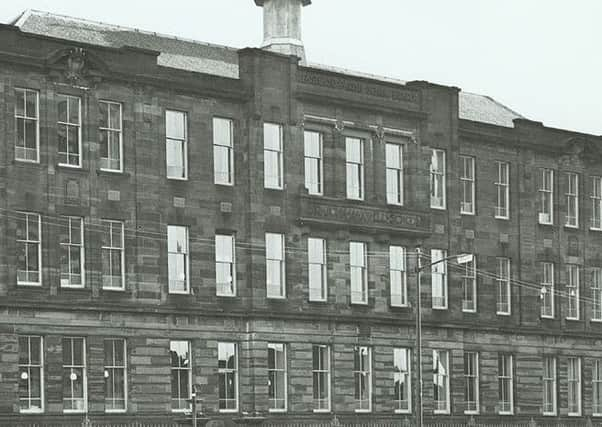Sir John Maxwell School: History of an iconic building


In August 1854 following a public meeting, Sir John Maxwell provided funds to build a successful Industrial School which enabled local children to access free basic education and trade lessons specific to each gender.
The school sold the children’s work from the trade lessons as well as the vegetables they grew to help raise funds.
Advertisement
Hide AdAdvertisement
Hide AdIn 1872 Eastwood School Board eventually took on responsibility for the provision of education services and the following year, architect David Thomson was commissioned by Eastwood School Board to build an extension.


By 1906 the school was struggling to cope with the number of children requiring education and proposals were drawn up by Eastwood Parish School Board to replace the school with a new building on the same site.
On January 9, 1909, honoured that the school was named after him, Sir John Stirling Maxwell officially opened a modern three storey, red sandstone building built from stone from the Locharbriggs Quarry in Dumfriesshire.
Costing £16,600, the new school provided 22 classrooms, heating and ventilation systems and two large central halls that could accommodate 550 pupils. Night classes were also held at the school and from 1908 to 1915 John Maclean taught classes in Marxism.
Advertisement
Hide AdAdvertisement
Hide AdSir Robert Rowand Anderson, who was architect of Pollokshaws Burgh Hall and Pollok House, was unhappy with the design of the school and commented that it should have been designed in keeping with the Pollokshaws Burgh Hall.
Sir John Stirling-Maxwell, the 10th Baronet, Scottish politician and philanthropist, also helped shape the Pollok area.
During Maxwell’s lifetime he worked with various organisations, and was chairman of both the Royal Fine Art Commission of Scotland and the National Galleries of Scotland Ancient Monuments Board.
He was a founding member of the National Trust for Scotland in 1931, and was elected President in 1943. It was in this capacity that he sought a home for the many treasures gifted to the city by Sir William Burrell in 1944. Unfortunately, he never succeeded before his death in 1956.
Advertisement
Hide AdAdvertisement
Hide AdHis daughter, Dame Anne Maxwell MacDonald, offered the City of Glasgow Corporation Pollok House and its large estate, where they were finally able to construct the Burrell Collection.
And the school grounds were not the only gift Maxwell offered.
He also offered the land and paid for the construction of the School’s neighbouring building, Pollokshaws Burgh Hall, in the decade prior to the school being built.
He also donated the land for the similarly used Pollokshields Burgh Hall, located nearby at the edge of Maxwell Park, named for the family.
